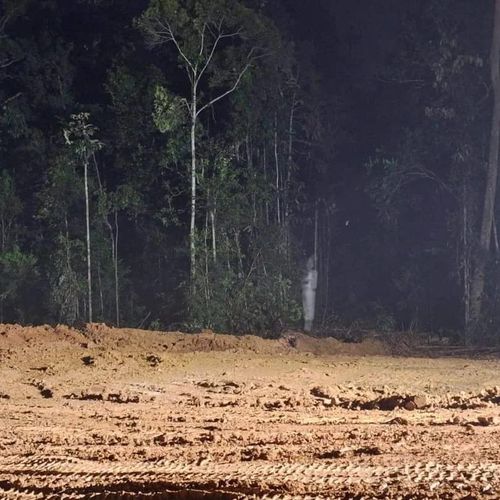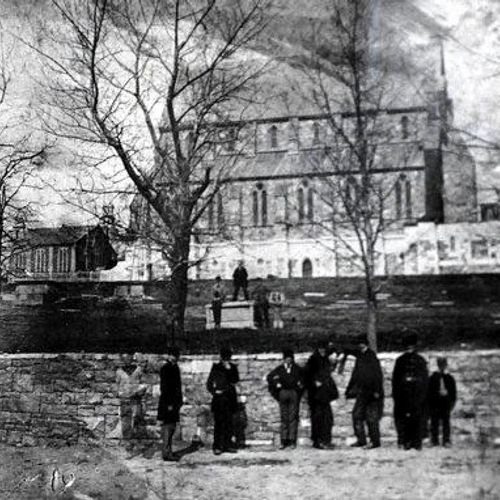| ID | #1524742107 |
| Added | Thu, 26/04/2018 |
| Author | July N. |
| Sources | |
| Phenomena | |
| Status | Hypothesis
|
Initial data
White rock, British Columbia, 1966.
Ralph hardy, a retired clergyman from White Rock, British Columbia, made this famous photograph in 1966. His intention was to photograph the elegant spiral staircase (known as the "Tulip Stage") at the Queen's House, National Maritime Museum in Greenwich, England.
In the pictures, a figure climbing up the ladder, holding with both hands the railings.Experts, including laboratory KODAK, examined the original negative and made a statement: "no manipulation has occurred". They say that unexplained silhouettes seen many times near the stairs, and heard the sound of footsteps.
This photo is not the only evidence of Ghost activity at the Queen's House. Also there you can see other similar phenomena. For example, the sound of footsteps. Recently, a Gallery assistant during the tea break became a witness of self-closing doors. This event was noticed by his two colleagues. It seemed that maybe it was one of the lecturers, but ...
Then I saw a woman passing through the balcony and through the wall on the Western balcony [...] I could not believe my eyes, I felt a very cold breeze and the hairs on my arms and neck. We went all the way to the living room, looking down the bed, I passed through the hallway and through the wall, and then my friends were killed, the woman in white-grey dress, made of something like a crinoline.
Other witnesses said that the building had heard the choral singing of children, was seen the figure of a pale woman in a frenzy wiping the blood at the base Lesnica. Apparently, 300 years ago, the cleaning lady of this house was dropped down the stairs and died at their base.
Cracking the door, tourists felt the pinch of invisible fingers. If everything is a figment of human imagination? Perhaps this story is more complicated than we think.
Translated by «Yandex.Translator»
Original news
Ralph Hardy, emerytowany duchowny z White Rock, Kolumbii Brytyjskiej, wykonał tą słynną fotografię w 1966 roku. Jego zamiarem było sfotografować eleganckie spiralne schody (znane jako "Schody Tulipanowe") w Queen's House, Narodowego Muzeum Morskiego w Greenwich w Anglii. Po wywołaniu na zdjęciu ukazała się figura wspinająca się po schodach, trzymająca poręcz obiema dłońmi. Eksperci, włączając w to laboratorium KODAKA przebadali oryginalny negatyw i wydali oświadczenie: "negatyw jest autentyczny i nie miały miejsce żadne manipulacje". Mawia się, że niewyjaśnione sylwetki były widywane wielokrotnie w pobliżu schodów, słychać było również odgłosy kroków.
Zdjęcie to nie jest jedynym dowodem aktywności duchów w Queen's House. Budynek mający przeszło 400 lat jest łączony z innymi podobnymi zjawiskami a odgłosy kroków słychać tam po dziś dzień. Ostatnio, asystent Galerii podczas przerwy na herbatę był świadkiem samoczynnie zamykających się drzwi. To samo zdarzenie widzieli jego dwaj koledzy. Wydawało się, że być może to jeden z wykładowców, lecz... "Wtedy zobaczyłem kobietę przelatującą przez balkon i przez ścianę na zachodnim balkonie [...] Nie mogłem uwierzyć własnym oczom. Poczułem bardzo zimny podmuch i włosy na moich rękach i szyi stanęły dęba. Pobiegliśmy wszyscy do pokoju dziennego patrząc w dół w kierunku sypialni. Coś przeszło przez przedpokój i przez ścianę. Wtedy zamurowało też moich kolegów. Kobieta byłą ubrana w biało szarą suknię zrobioną z czegoś w rodzaju krynoliny." - powiedział asystent.
Inne historie opowiadają o tym, że w budynku słychać było śpiew chóralny dzieci, widywana była figura bladej kobiety, która w szaleństwie wycierała krew u podstawy Tulipanowych Schodów. Podobno 300 lat temu sprzątaczka tego domu została zrzucona ze schodów i zginęła u ich podstawy. Trzaskające drzwi, turyści szczypani przez niewidzialne palce. Czy wszystko to jest wymysłem ludzkiej wyobraźni? Być może historia ta jest prawdziwsza niż nam się może wydawać.
Hypotheses
Objects in motion, captured on a long exposure

Most often this artifact is called skayfish if the lens gets a passing bird or insect. It is based on the discrepancy between the speed of the video and the frequency of the flapping of insect wings. Essentially, each video drops a few strokes of the wings of an insect, which when viewed looks like "arrow", provided with long protuberances. The motion of the insect by its translucent body seems to "boom" and vibration of the wings give the appearance of bumps.
Investigation
Resume
Similar facts
Log in or register to post comments












